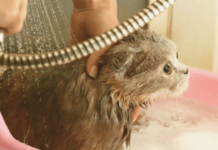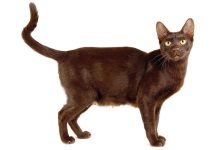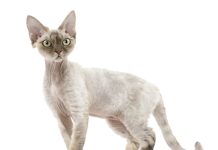The caracal is a wild cat having streamlined body with dramatic marking on its face. The most striking feature of this cat is tufted ears which makes it look different from other cats. The cat uses its tufts to camouflage in jungle and to shoo away flies from its face. It also uses its tuft to communicate with fellow caracal.
Another name for this breed is ‘desert lynx’. The cat comes in solid color generally tan with no stripes or markings on its body. Caracal is known to be the heaviest, fastest and largest of the small cats in Africa. The caracal is one among the 30 species of small cats. It is native to Africa, the Middle East, Central Asia, and India. It is nocturnal and is an agile hunter. They eat almost any animal caught by them.
The jumping ability of the cat is incredible. It seems as if the cat is flying. They are extremely territorial and prefer to lead a solitary life. The male and female caracals meet only for breeding purpose. The ancient saying “to put a cat among the pigeons” comes from this cat. In olden days, it was a contest where the cat was used to hunt pigeons for their master.
This cat population is not at alarming state but in Asia there is major decline in its number. Deforestation and conversion of forest to irrigation land has destroyed the habitat of caracal. Many ranchers and farmers shoot this cat because they tend to attack on livestock for their easy source of food.
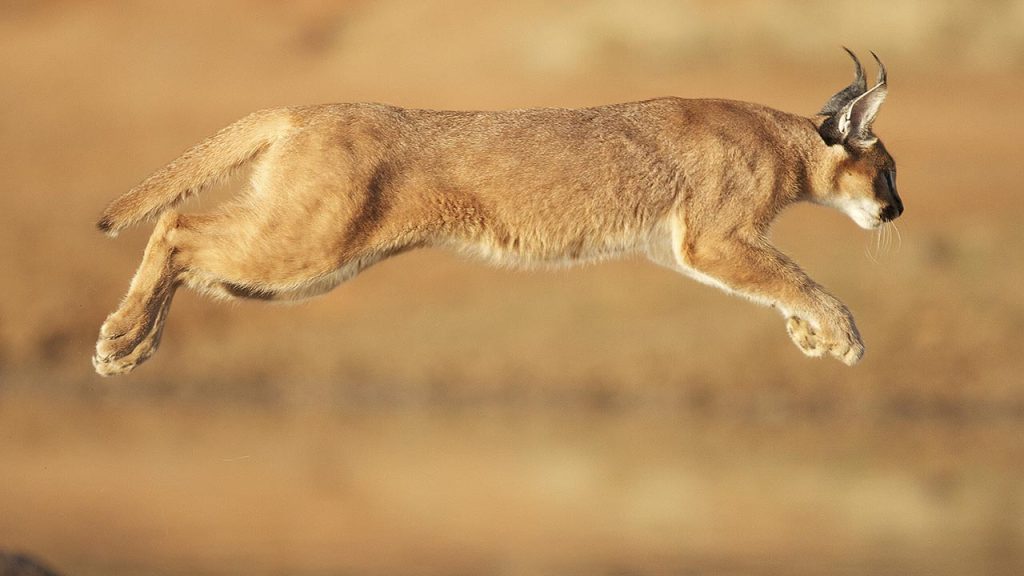
Caracal Cat Characteristics
- The caracal prefers to live in woodland and drier savannah regions.
- Caracal comes under small but deadliest breed of cat. It can hunt animals thrice its size. This cat is carnivorous.
- The caracal is tamed by Indians and Iran for entertainment purpose. They use the cat for hunting.
- The gestation period of this cat is 80 days.
- The litter size of the cat is 2-4 kittens.
- The cat weighs around 16-18 kg
- The cat stands at a height of 40-50 cm tall from shoulder. It is 88-99 cm long.
- The average lifespan of this cat is 20 years.
- The predators of the cat are humans and larger cats i.e. lions.
- This specie of cat is native to Middle East, Southwest Asia, West Africa, South Africa, and Central Africa.
- The conversation status of the cat is of least concern.
- The cat has dramatic ears which is long and sports black tuft of hair.
- The cat comes in three colors - tawny brown, brick red and black (rare).
- The cat can jump up to 10ft in the air to catch birds.
- The caracal doesn’t make good pets because of its wild and aggressive nature.
Caracal Facts
- The name of the cat- caracal is derived from Turkish word “"Karakulak" which means black ears.
- It is the fastest cat of its size.
- Both the sexes prefer to live in solitary but mother and children live together till the baby doesn’t become independent. They also cuddle each other.
- Every caracal has different pattern of whiskers just like no human beings can have similar pattern of finger prints.
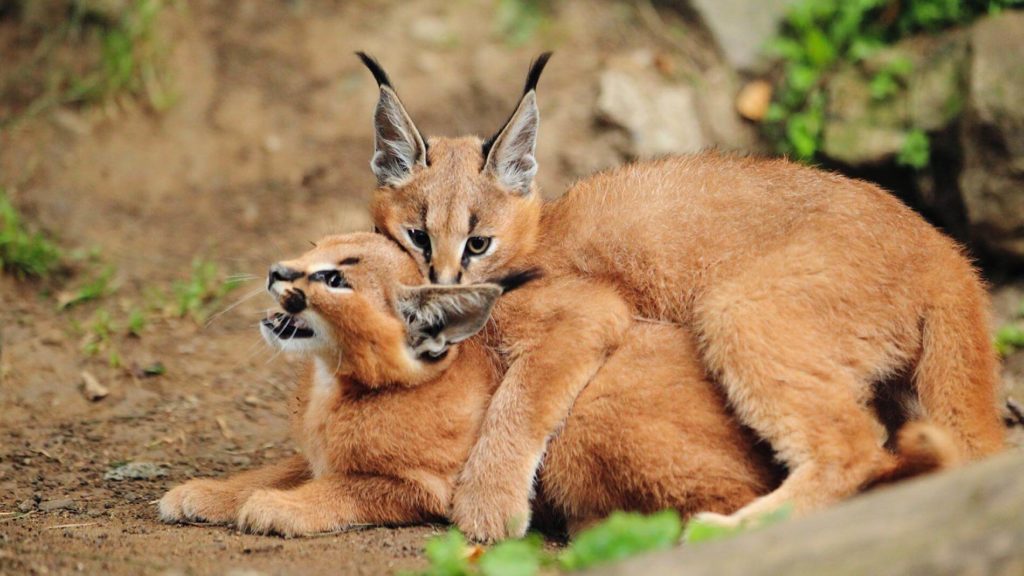
Physical Description
- Body – The caracals are the powerful buildup cat. They are robust yet with slender body. The hind legs are longer than front legs which enables the cat to catch its prey and to jump incredibly high up to 10ft. in the air. The tail of the cat is short in comparison to its body.
- Face - The cat has long ears which are topped with long black tuft of hair (approximately 4cm long). The back of the ears is of black color with sprinkled hairs of white color. The face is small, round and has black and white stripes running down from eyes to the nose. It has yellow-brown color eyes.
- Height and Weight - It is a medium sized cat. The cat stands at a height of 40-50 cm and is 88-99 cm long. Male cats weigh around 18 kg and females weigh around 16kg.
- Coat - The cat has thick, short and dense coat. It doesn’t have any spots or stripes on its coat. The cat comes in tawny brown (commonly found), brick red and black color (rare). The under parts of the cat are of light color.
Habitat
The geographical regions of the cat are Middle East, Southwest Asia, West Africa, South Africa, and Central Africa. The cats live in the woodland and semi dry area. Few cats can be seen in arid mountain evergreen forests. The cat doesn’t inhabit in rain forest.
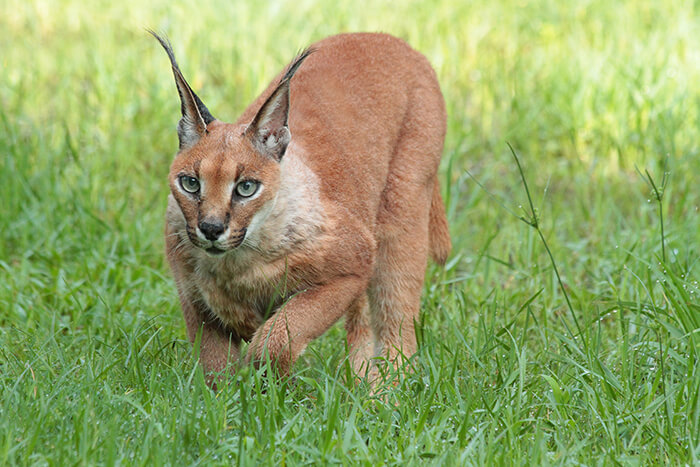
Diet
The caracals are strictly carnivorous animal. They feed upon variety of mammals in the wild. Antelope, hyraxes, hares, and rodents are the most common prey of cat. It also preys upon livestock (if available).
Caracals can survive long period of time without water. They fulfill their thirst from the body fluids of their prey. The caracals have incredible hunting skills. They even prey upon birds as they can jump 10ft in the air.
Predators
The caracals are food for bigger cats like lions, cheetah and tiger. Human beings consider this animal as threat to their livestock so they kill them as soon as they find caracal near their vicinity. Caracals are also hunted for its skin. Habitat loss is the significant threat to caracals.
Lifespan
The caracals live around 20 years in captivity and up to 17 years in wild.
Caracal Reproduction
The caracals are sexually active animals. They reach sexual maturity up to 1 year of age. They mate throughout the whole year. The male and female caracals interact only for mating purpose. The gestation period of female caracal is of 2 months.
It gives birth to almost 2-4 kittens. Kittens are born with their eyes closed and are highly dependent upon mother for their survival. They open their eyes after 10-12 days of birth. Mother nurture its children till 10-11 months after their birth. After that most of the kittens get separated from mother or few tend to live with their mother.
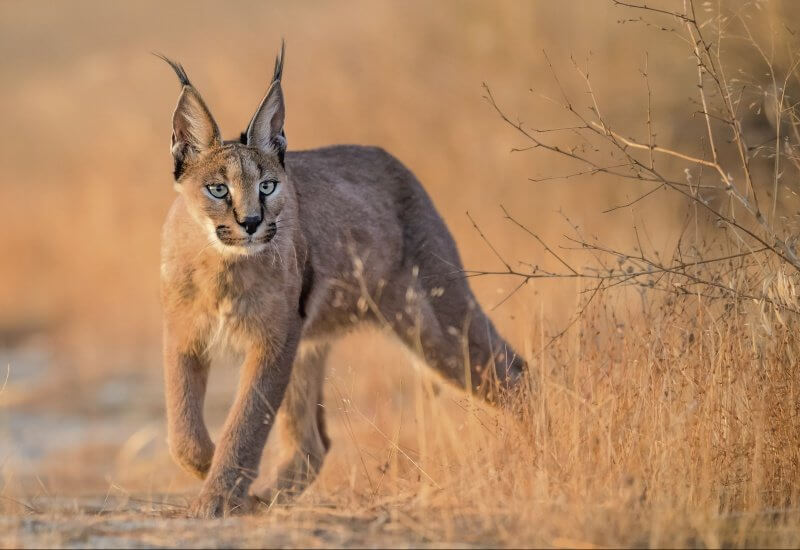
Behavior
The caracals are solitary animals. The only exception is mother caracal living with its kittens. They patrol their territory strictly and mark it by urinating and by rubbing their claws on trees. This cat has scent gland on its face and between its toes. They use scent to communicate their area.
Lifestyle
The caracals are secretive animals. A lot Information about its lifestyle is gathered from the captive cats. They mostly hunt after the sunset. The caracals are agile animals and they chase their prey till 5m after then they leave it. The interaction of one caracal to another is limited.
Caracals and Human Interaction
Caracals are not commonly domesticated because of its wild and aggressive nature. It also raises the legal concern and public safety concern to owners who own this cat. Only professionals who are aware about the characteristics of the cat and zoos own this cat. In earlier days, people of India and Iran own this cat for contest purpose. They use to bet on the caracal of their choice and the cat that kills most of the pigeons becomes the winner.

